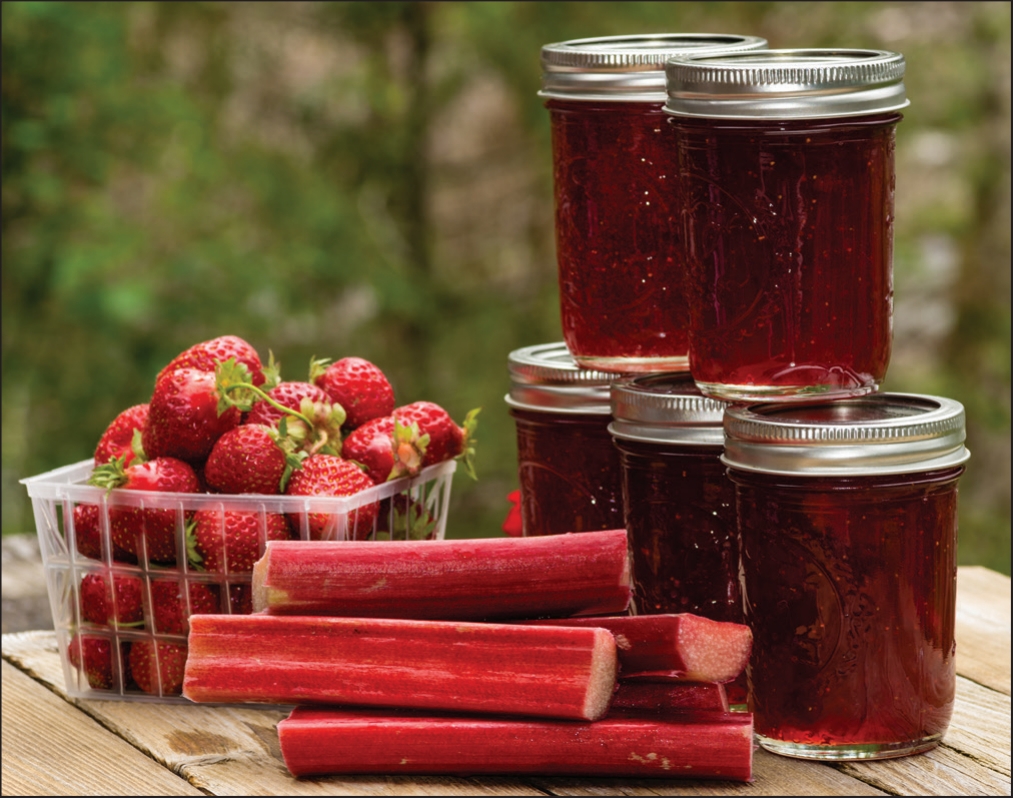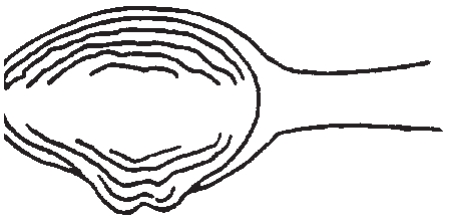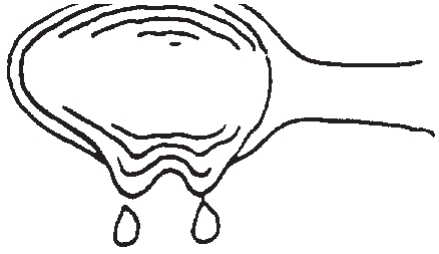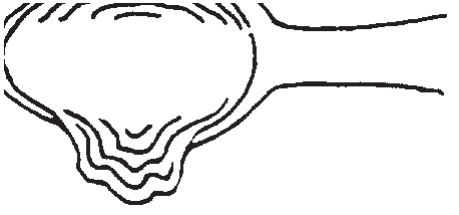Jams and Jellies
FNH-00730 View this publication in PDF form to print or download.
Fruit spreads such as jams and jellies add flavor and color to meals and snacks. Characteristics of the spread vary based on the type of fruit used, how it is prepared, the proportion of different ingredients and the methods of cooking the spread. Jelly is made from fruit juice. It should be clean and sparkling and hold its shape.
Jam is made from crushed or mashed fruit. It is less firm than jelly and may not hold its shape.
Preserves are small whole fruits or pieces of fruit in a clear, jellied syrup.
Conserves are a jam-like product mixture of more than one fruit. A true conserve contains nuts, raisins and/or coconut.
Marmalade is a soft jelly with pieces of fruit evenly suspended in it, usually citrus fruit and/or peels.
Ingredients
Proper amounts of four ingredients — fruit, pectin, acid and sugar — are needed to make a jellied fruit product.
Fruit, vegetables and herbs provide the color and flavor of the jellied product. Select high-quality produce and handle safely. Fruit that is slightly underripe or barely ripe provides some pectin and acid, which decreases as it ripens.
Pectin, a natural carbohydrate, causes the gel. It is found in varying amounts in
different fruits. Many recipes call for skins and cores because pectin is concentrated
in these areas. Pectin is available commercially in a liquid or powdered form. Do
not substitute; use the type of pectin called for in the recipe. These are mixed differently
and are not interchangeable.
These fruits contain considerable amounts of natural pectin:
- tart apples
- gooseberries
- citrus fruit
- Eastern Concord grapes
- cranberries
- sour plums
- currants
These fruits are low in pectin:
- apricots
- peaches
- blueberries
- pineapple
- cherries
- strawberries
- rhubarb
Acid adds to the flavor and helps with gel formation. It is higher in under-ripe fruits. When low in acid, lemon juice or citric acid are added.
Sugar helps in gel formation. It serves as a preserving agent and improves the flavor.
Light corn syrup: In a long-cook method without added pectin, one-quarter of the sugar can be replaced with syrup. Light corn syrup can be used to replace one-half of the sugar in recipes with added commercial pectin. If powdered pectin is used, ½ cup of sugar can be replaced with syrup. If liquid pectin is used, up to 2 cups of the sugar can be replaced with syrup.
Honey: Use a light, mild-flavored honey to replace some sugar. In recipes without added pectin, honey can replace half of the sugar. If pectin is added, 2 cups of honey can replace 2 cups of sugar in most recipes. In small recipes, ¾ to 1 cup of sugar can be replaced by honey.
Reduced sugar or no-sugar products may be made using a low-sugar pectin product. These have a modified pectin or alternative thickener. Follow the pectin products directions carefully.
Equipment/Containers
Large pot, 8 to 10 quarts capacity, is essential for making jellied product; the mixture will come to a full rolling boil without boiling over.
Clock or watch with a second hand for timing. Jelly, candy or deep-fat thermometer aids in making jelly without added pectin.
Boiling water canner with a rack and close-fitting lid. Set on the heat source. Add hot water.
Canning jars, lids and bands, washed and rinsed. To sterilize jars, place in the canner, bring to boil. Boil for 10 minutes. Keep jars in hot water until ready to fill. If the boiling water canner processing is more than 10 minutes the jars do not need to be sterilized ahead as it occurs during processing.
General Preparation
Prepare enough fruit for one batch at a time. Increasing the size of jellied recipes is not recommended because it provides difficulties in gelling. There are two methods for preparing jellied products. The conventional long-cook method uses the fruit with natural pectin, mixed with sugar then cooked 30 to 45 minutes, until the gel point is reached. The short-cook method adds pectin.
Jam without Added Pectin
Wash and rinse all fully ripe fruits thoroughly before cooking. Do not soak. Measure ingredients carefully.
Apricots: Remove stems, skins and pits; cut into pieces; crush. Place 4 cups crushed apricots, 4 cups sugar and 2 tablespoons lemon juice in large saucepot.
Peaches: Remove stems, skins and pits; cut into pieces; crush. Place 5 ½ cups crushed peaches, 4 cups sugar and 2 tablespoons lemon juice in large saucepot.
Berries: remove stems and blossoms; crush. May put seedy berries through a sieve or food mill. Place 4 cups crushed berries and 4 cups sugar in large saucepot.
Slowly bring to boil while stirring constantly. Boil until mixture thickens. Use the temperature test for gel point. Pour hot jam into hot half-pint jars, leaving ¼ inch headspace. Wipe jar rims and add two-piece, self-sealing lids.
Process 5 minutes in a boiling water canner.
To Process at High Altitudes
To process in a boiling water canner at altitudes between 1,001 and 6,000 feet, add 5 minutes to shown processing time; from 6,001 to 8,000 feet add 10 minutes to processing time.
Jelly without Added Pectin
Measure 4 cups extracted fruit juice (see below to make juice) and 3 cups sugar. Place in large saucepot. Place on high heat, stir until the sugar is dissolved. Bring to boil, continue to the gel point. To test if jelly is done, use the temperature test, gel point test or freezer test method.
Remove from heat and quickly skim off foam. Fill sterile, hot, half-pint jars with jelly, leaving a ¼ inch headspace. Wipe rims and threads of jars with a damp, clean cloth. Add two-piece, self-sealing lids.
Process in a boiling water canner for 5 minutes.
Making Juice for Jelly
Jellies and fruit syrups are made with fruit juice. For this, choose fruit naturally high in pectin. To make the juice, place fruit in pot with a little water.
For apples and other hard fruits, cut into small pieces. For each pound of fruit add 1 cup cold water to cover the fruit in the kettle. Bring to boil, reduce heat then simmer 20 to 25 minutes.
For berries and grapes, crush, and only use enough water to prevent scorching, about ¼ cup per pound of berries. Bring to boil, reduce heat, then simmer 5 to 10 minutes.
For plums and other soft fruit, crush. For each pound add ½ cup water. Bring to boil, reduce heat, then simmer 5 to 10 minutes.
Strain juice through two layers of cheesecloth or through a jelly bag. Don’t squeeze fruit since this will add unwanted pulp to the mixture and result in a cloudy jelly. At this point, the juice is ready and can be used immediately, or it can be canned or frozen for making jelly at a later time.
Steam juicers may be used for preparing juices for making jelly. Follow manufacturer’s directions for extracting juice in this method.
Gel Point Tests
Temperature Test: The temperature test is a good way to determine the gelling point. Simply cook your jelly to 8°F over the boiling point of water. At sea level that is 220°F.
Freezer Test: Remove the jam mixture from the heat. Place a tablespoon of boiling jam on a cold plate and put in the freezing compartment of a refrigerator for a few minutes. If the mixture gels it is ready to fill into the jar.
Sheet or Spoon Test: Dip a cool metal spoon into the boiling jelly mixture. When two drops form together and sheet off the spoon, the jelly should be done.



Blueberry Jam
- 4 ½ cups blueberries
- 7 cups sugar
- ½ teaspoon cinnamon
- ½ teaspoon cloves
- 1 lemon, juice and grated rind
- 6 ounces liquid pectin
Prepare lids. Open liquid pectin pouches and stand upright in a cup or glass. Wash and thoroughly crush blueberries, one layer at a time, in a saucepan. Add sugar, cinnamon, cloves, lemon juice and grated lemon rind in a saucepan. Simmer for 5 minutes. Remove from heat; add liquid pectin. Stir and skim off foam. Immediately pour jam into hot canning jars, leaving ¼ inch headspace. Wipe jar rims and add prepared two-piece lids. Process 5 minutes in a boiling water canner.
Salmonberry Jelly
- 4 cups salmonberry juice
- 1 package powdered pectin
- 5 ½ cups sugar
To prepare juice, remove stems from 2 quarts of ripe, clean berries. Put berries in saucepan, add 1 cup water, cover, simmer 10 minutes. Extract juice.
To make jelly, measure sugar and set aside. Measure juice into a large saucepan. Add pectin and stir until dissolved. Place on high heat and bring quickly to a full rolling boil that cannot be stirred down. Add sugar, stirring constantly to a full rolling boil. Boil hard for 1 minute. Remove from heat; skim off foam quickly. Pour jelly immediately into hot, sterilized jars, leaving ¼ inch headspace. Process 5 minutes in boiling water canner. Yield six 8-ounce jars.
Strawberry Preserves
- 1 ½ quarts firm, ripe strawberries
- 5 cups sugar
- ¼ cup lemon juice
Sort and wash fully ripe strawberries; remove stems and caps. Combine strawberries and sugar in a clean glass container. Cover; let stand 3 to 4 hours. Transfer to large saucepan and place over very low heat until simmering point is reached. Add lemon juice. Boil rapidly 10 to 12 minutes, or until strawberries are clear and the syrup is thick. Immediately pour preserves into hot pint or half-pint canning jars, leaving ¼ inch headspace. Wipe jar rims and add two-piece lids. Process 10 minutes in a boiling water bath. Yields 4 half pints.
Rhubarb Berry Conserve
- 2 cups clean rhubarb, cut fine
- 1 cup seeded raisins
- 2 oranges, pulp and grated rind
- 3 cups sugar
- 4 cups whole strawberries, raspberries, blackberries or other type berries
- ½ cup chopped walnuts
Combine the rhubarb, raisins, orange rind and pulp, and sugar in a clean glass bowl. Cover; refrigerate overnight. Transfer to large saucepan, add the berries, and place over low heat. Simmer until thick. Add walnuts. Pour boiling hot into hot jars, leaving ¼ inch headspace. Adjust caps. Process 15 minutes in boiling water bath. Yields 6 half pints.
References
USDA Complete Guide to Home Canning: https://nchfp.uga.edu/resources/category/usda-guide
National Center for Home Food Preservation University of Georgia Cooperative Extension Service: www.uga.edu/nchfp.
Ball Blue Book. Ball Corporation, Consumer Products Division, Consumer Affairs, 345 S. High, Muncie, IN 47305-2326.
University of Alaska Fairbanks Cooperative Extension Service berry publications: https://www.uaf.edu/ces/publications/database/?contentsearch=berries
Julie Cascio, Extension Faculty, Health, Home and Family Development. Originally written by Roxie Rodgers Dinstel, former Extension Faculty, Health, Home and Family Development
Revised May 2025
